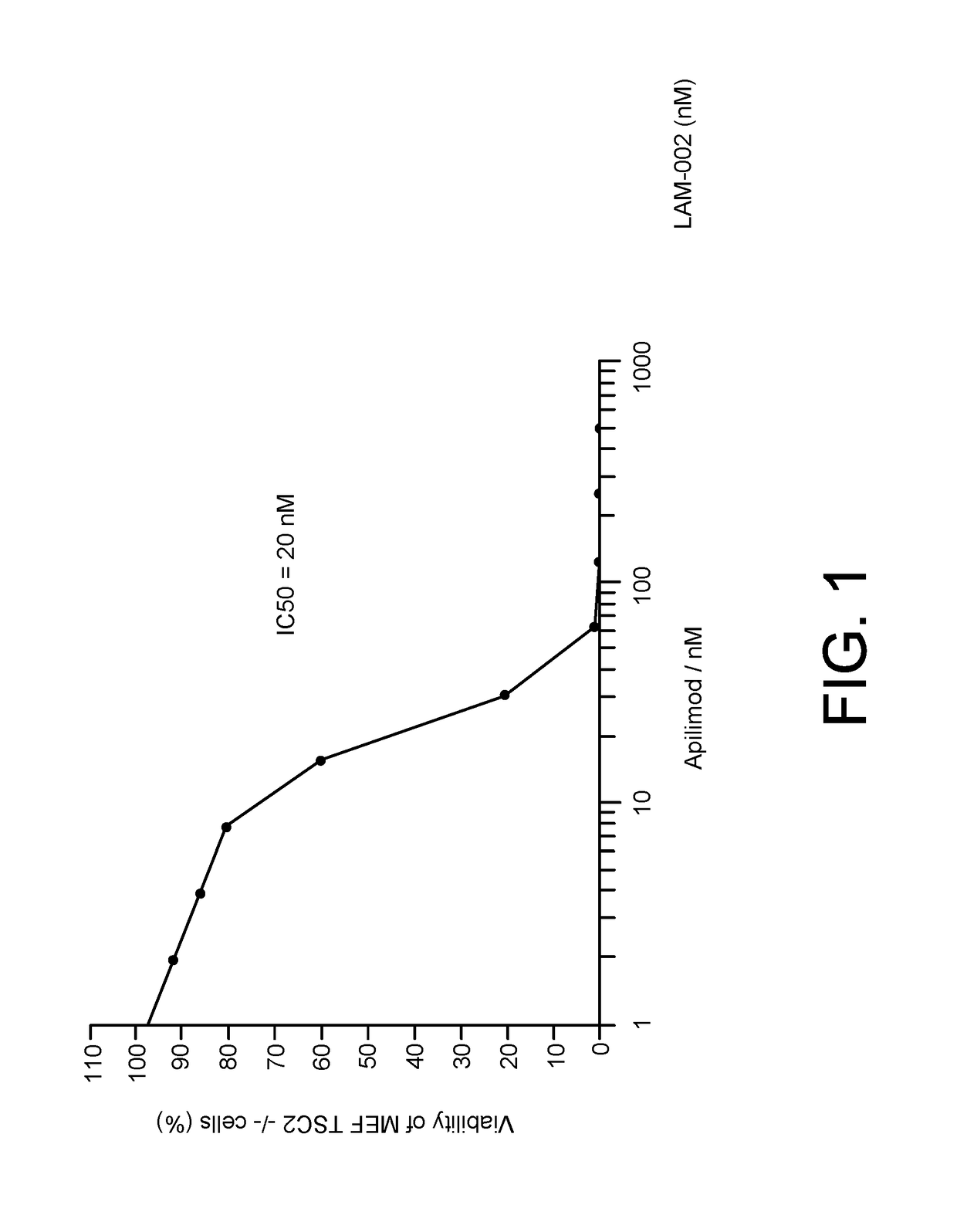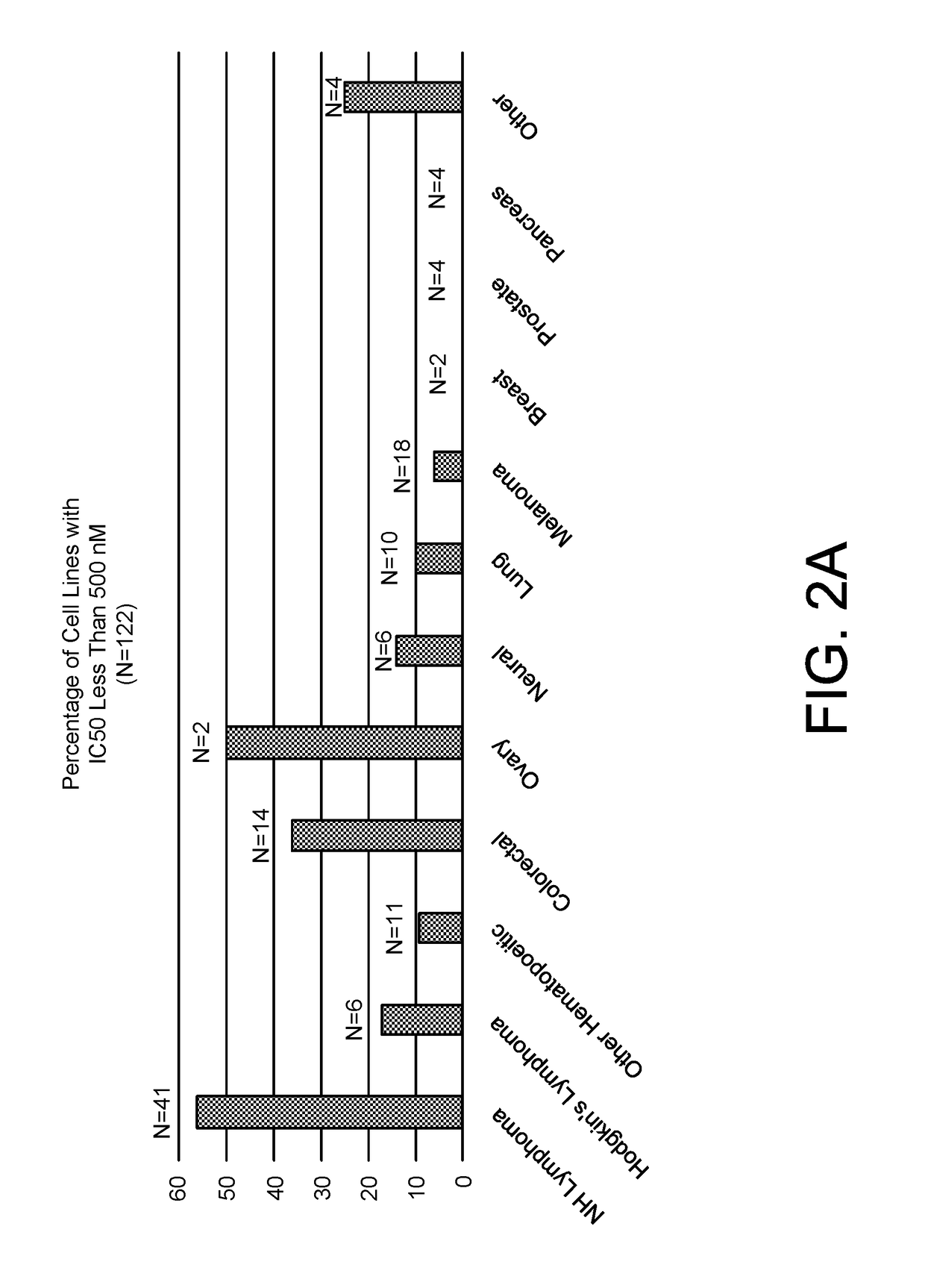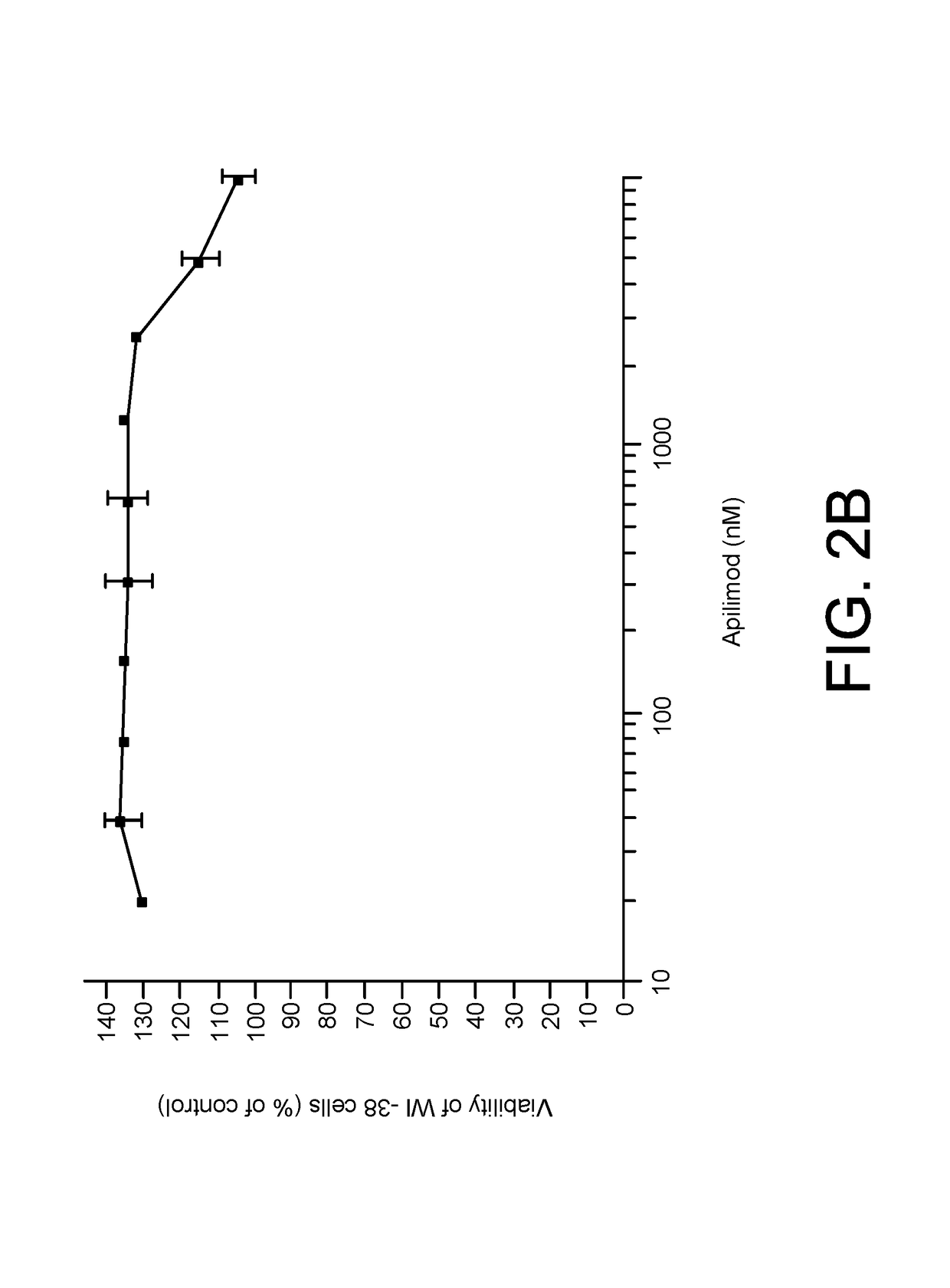Apilimod for use in the treatment of renal cancer
a technology of apilimod and adiponectin, which is applied in the direction of heterocyclic compound active ingredients, organic active ingredients, drug compositions, etc., can solve the problems of limited therapeutic efficacy, apilimod did not demonstrate the efficacy over placebo, and translates into clinical improvemen
- Summary
- Abstract
- Description
- Claims
- Application Information
AI Technical Summary
Benefits of technology
Problems solved by technology
Method used
Image
Examples
example 1
is a Highly Selective Inhibitor of TSC2 Null Cell Proliferation
[0143]Apilimod was identified in a high throughput cell viability screen using TSC2− / − mouse embryonic fibroblasts (MEF-EV) cells. TSC2 null cells have constitutively active mTOR. Briefly, MEF cells derived from TSC2− / − knockout mouse embryos (Onda et al., J. Clin. Invest. 104(6):687-95, 1999) were infected with a retrovirus vector encoding the hygromycin antibiotic resistance gene (MEF-EV) or the same retrovirus vector also encoding TSC2 (MEF-TSC2). The MEF-EV and MEF-TSC2 line were then established by hygromycin selection.
[0144]Cells were expanded in DMEM containing 10% FBS (Omega Scientific) and 2 mM L-Glutamine. Frozen stocks of cells were prepared for direct use in the HTS assay. Cells were harvested, pelleted and then resuspended in 95% FBS & 5% DMSO at a concentration 1×107 cells / ml., One ml aliquots were rate frozen to −80 at a rate of 1 degree per minute. These stocks were then transferred to vapor phase liquid ...
example 2
is a Highly Selective Cytotoxic Agent in Cancer Cells
[0153]The cytotoxic activity of apilimod was evaluated using a standard cell viability assay such as CellTiterGlo™ according to the manufacturer's instructions. 122 human cancer cell lines were evaluated for sensitivity to apilimod. A cell line was called as apilimod sensitive if the IC50 was less than 500 nM. 35 cell lines were identified as sensitive to apilimod-induced cytotoxicity. Apilimod was also highly selective for cancer cells compared to normal cells, which had IC50's ranging from 20-200 fold higher than the cancer cells (FIGS. 2A-2B).
[0154]The mechanism of apilimod's cytotoxic activity was further investigated by assaying for autophagic vacuoles after 72 hours of treatment in an H4 neuroglioma cell line (IC50 250-300 nM). Autophagy was quantified using the Cyto-ID Autophagy detection kit (Enzo) according to manufacturer's directions. FIG. 3 shows that apilimod induced autophagy in a dose-dependent manner.
example 3
is a Highly Selective Binder of PIKfyve Kinase
[0155]In order to identify the cellular target of apilimod in cancer cells, whole cell lysate prepared from human neuroglioma cells was used to identify its binding partners using chemical capture mass spectrometry (CCMS). This work was performed at Caprotec Bioanalytics GmbH, Berlin Germany. See Michaelis et al., J. Med. Chem., 55 3934-44 (2012) and references cited therein.
[0156]Briefly, two capture compound variants employing apilimod as selectivity function attached in a single orientation were synthesized and analyzed by LC-MS and 1H-NMR to ensure identity and purity. Capture conditions were optimized in whole cell lysate from H4 (human neuroglioma) cancer cells, e.g. minimization of non-specific interactions of the proteins with capture compounds, concentration of reagents and proteins to obtain maximum binding of proteins and capture compounds, etc. One capture compound was selected to identify specific protein binders in the CCMS...
PUM
| Property | Measurement | Unit |
|---|---|---|
| survival time | aaaaa | aaaaa |
| temperature | aaaaa | aaaaa |
| dissociation constant | aaaaa | aaaaa |
Abstract
Description
Claims
Application Information
 Login to View More
Login to View More - R&D
- Intellectual Property
- Life Sciences
- Materials
- Tech Scout
- Unparalleled Data Quality
- Higher Quality Content
- 60% Fewer Hallucinations
Browse by: Latest US Patents, China's latest patents, Technical Efficacy Thesaurus, Application Domain, Technology Topic, Popular Technical Reports.
© 2025 PatSnap. All rights reserved.Legal|Privacy policy|Modern Slavery Act Transparency Statement|Sitemap|About US| Contact US: help@patsnap.com



